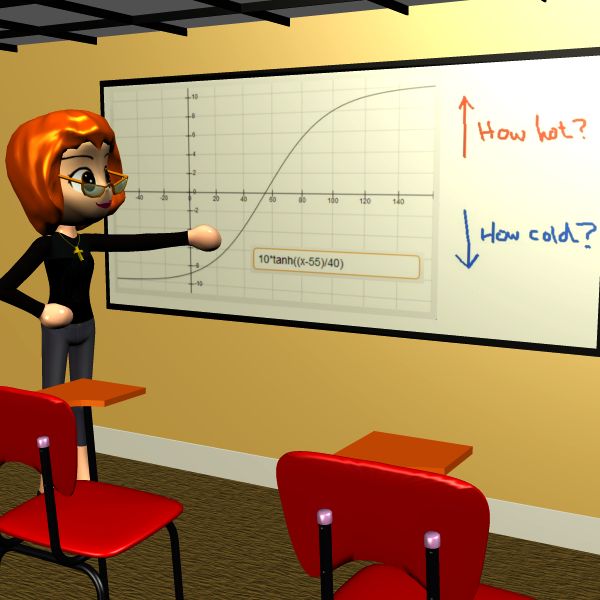Monday, January 21, 2013
Human temp scale?
Listening to local radio announcer this morning: "Hey, Deer Park is getting balmy now! Their temperature is five times as warm as the last reading. They've gone from 1 degree to 5 degrees!"
The announcer was joking, but not entirely. There are two ways of 'correcting' his idea.
(1) If you want to get technical and thermodynamic about it, "five times as hot" as 1 degree F would actually be hot enough to melt iron. Absolute zero on Fahrenheit is -459, so 1 degree is actually 460 degrees above the point where molecules don't wiggle. To get the molecules wiggling 5 times as fast as they were in Deer Park's air, you'd have to reach 2360 F, which is melting range for a number of common metals.
(2) Professor Polistra doesn't want to get technical. She wants to get human, wants to find a measurement system that agrees with human experience and senses. So she wants to set up a human-based scale of temperature, something like decibels or the Beaufort wind scale. Unfortunately, temperature is much more subjective and individual than sound or wind, so a general scale is probably impossible. Consider the 'annotated thermometer' joke, which is about as close as we can get to a human scale. All of its points are specific to nationalities or localities, like:
40 F: Californians shiver uncontrollably. Minnesotans go swimming.
Still, Prof P wants to try fitting a dB-style temperature curve. It would obviously be a tanh shape, like almost all human sensory responses. Using the Fooplot online grapher, she formed up a graph for her own rather cold-loving response. The horizontal axis is degrees F, and the vertical might be called "How hot is it?" on the positive side, and "How cold is it?" on the negative side. Positive 10 is Too Fucking Hot, Negative 10 is Too Fucking Cold, and zero is Just Right.
 Incidentally, the function isn't clearly visible on the blackboard. It should be:
deciGoldies = 10 * tanh((Fahrenheit - 55) / 40).
By this scale, the distinction between 1 and 5 degrees is about half a dG, which seems about right.
Incidentally, the function isn't clearly visible on the blackboard. It should be:
deciGoldies = 10 * tanh((Fahrenheit - 55) / 40).
By this scale, the distinction between 1 and 5 degrees is about half a dG, which seems about right.
 Incidentally, the function isn't clearly visible on the blackboard. It should be:
deciGoldies = 10 * tanh((Fahrenheit - 55) / 40).
By this scale, the distinction between 1 and 5 degrees is about half a dG, which seems about right.
Incidentally, the function isn't clearly visible on the blackboard. It should be:
deciGoldies = 10 * tanh((Fahrenheit - 55) / 40).
By this scale, the distinction between 1 and 5 degrees is about half a dG, which seems about right.Labels: Heimatkunde
